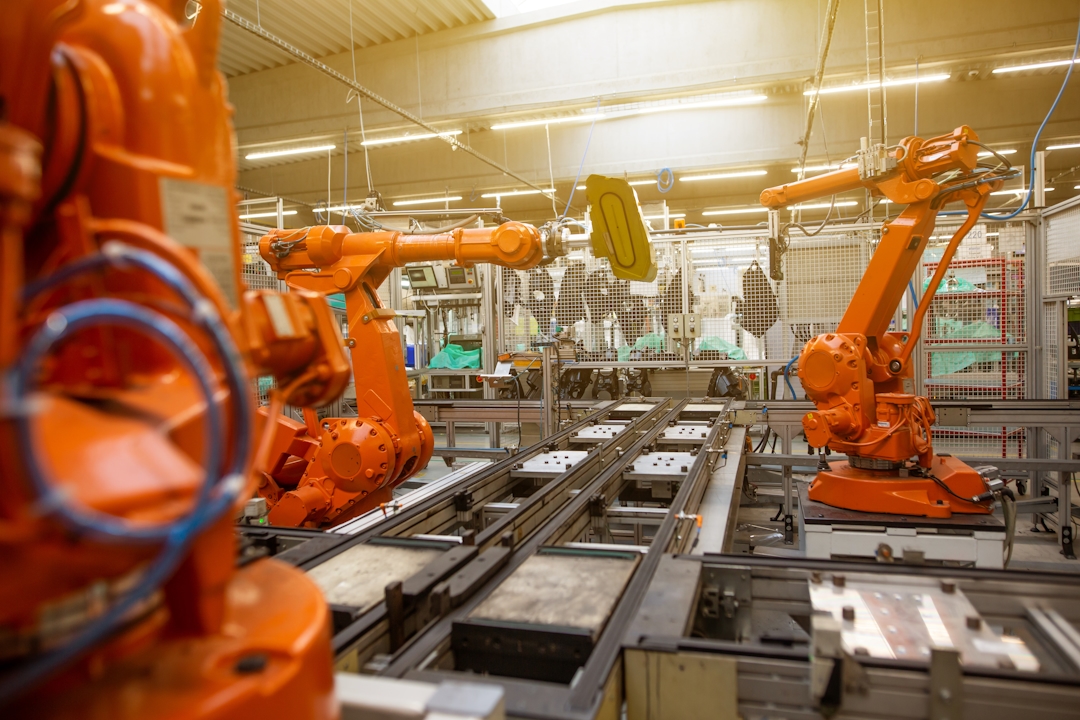Introduction #
Business Process Automation: Your 2024 Guide to Enhanced Productivity
In today's fast-paced business world, staying competitive necessitates operating smarter. Have you ever wondered how some businesses effortlessly manage massive workloads, minimize errors, and significantly reduce costs? The answer often lies in technology, specifically Business Process Automation (BPA). This guide from OneCube Technologies explores how streamlining your operations with AI-powered automation can unlock peak productivity for your business in 2024.
Understanding BPA #

Understanding Business Process Automation
Business Process Automation (BPA) leverages technology to automate tasks and enhance operational efficiency. It essentially delegates repetitive chores to a computer, freeing up your team for more strategic initiatives. This intelligent approach helps businesses reduce costs, minimize errors, and accelerate task completion.
BPA solutions are powered by several key technologies. Robotic Process Automation (RPA) utilizes software "robots" to manage routine, rule-based tasks, much like a digital assistant. Indeed, RPA is widely adopted, with 31% of businesses integrating it by 2024. Furthermore, Artificial Intelligence (AI) and Machine Learning (ML) amplify BPA capabilities, enabling systems to learn and make informed decisions. Over half of businesses already use AI to enhance operations, and 74% plan to increase their AI investment soon [5]. Finally, Business Process Management (BPM) provides the overarching framework to organize and govern these automated processes, ensuring seamless execution [2].
Benefits of BPA #

Benefits of Automating Business Processes
Adopting BPA solutions offers significant advantages for businesses. A major benefit is cost reduction. By automating repetitive tasks, businesses can lower labor costs and minimize expensive manual errors. Many companies report saving between 10% and 50% on costs after implementing BPA [5]. Fewer mistakes translate directly to less time and money spent on corrections.
Another powerful benefit is a strong Return on Investment (ROI). Businesses utilizing Robotic Process Automation (RPA), a core component of BPA, have seen their investment pay off quickly, with ROI improvements ranging from 30% to a remarkable 200% within the first year [5]. This demonstrates not only cost savings but also enhanced profitability through smarter operations via AI automation. Lastly, error reduction is critical. When machines handle tasks, the likelihood of human error significantly decreases, leading to higher quality outputs and less need for rework, ultimately improving overall efficiency [3].
Implementing BPA #

Implementing Business Process Automation
Implementing Business Process Automation (BPA) effectively requires a thoughtful approach. First, you need to understand your current business processes. Before automating anything, closely examine how tasks are currently performed. Identify bottlenecks and repetitive tasks that consume significant time or resources. Pinpointing these areas is crucial for successful automation implementation [2].
Next, it's essential to choose the right AI tools and automation solutions. With various options like Robotic Process Automation (RPA), Artificial Intelligence (AI), and Business Process Management (BPM) software available, selecting those that best fit your specific business needs is key. For instance, if your operations involve numerous rule-based, repetitive tasks, RPA might be an excellent fit. Conversely, if you require systems capable of learning and adapting, AI could be more suitable. Finally, training and adoption are vital for success. Even the most advanced technology will not deliver results if employees are not comfortable using it. Provide clear training and ongoing support to ensure your team embraces the new automated processes, facilitating a smooth transition and maximizing the benefits of your BPA investment [2].
Conclusion #
Conclusion
Business Process Automation (BPA) is no longer a luxury but a strategic necessity for businesses aiming for peak productivity in 2024. By leveraging AI solutions and technologies like Robotic Process Automation (RPA), organizations can automate repetitive tasks, drastically cut costs, reduce errors, and realize significant returns on investment. Implementing BPA successfully involves understanding your existing operations, selecting the right AI tools, and, crucially, ensuring your team is trained and adopts these new processes. Embracing BPA means working smarter, freeing up your workforce for more strategic initiatives, and ultimately paving the way for enhanced efficiency and sustained growth.
References #
Reference
- "Business process automation: A complete guide for 2024" by Acronis, Published: September 27, 2024, [Link][2]
- "42 must-know business process automation statistics [2024]" by Zip, Published: November 13, 2024, [Link][3]
- "Business Process Automation: Latest Statistics and Trends (2024)" by Software Oasis, Published: November 27, 2024, [Link][5]
- "What's the Future of Business Process Automation?" by Blue Prism, Published: 2024, [Link][4]
- "Top 10 Business Process Automation Trends to Watch in 2025" by FlowForma, Published: May 23, 2024, [Link][1]


